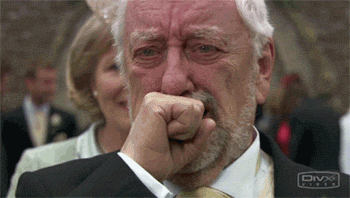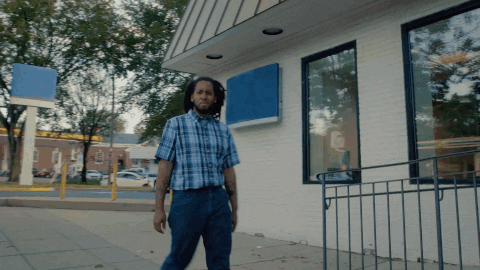If you’ve seen the movie 1984 film Sixteen Candles starring Molly Ringwald and directed by John Hughes, you know the film is a staple of the entire decade of the 1980’s. And you definitely know all about the teen heartthrob JAKE RYAN *heart eyes!!*
For me, I grew up watching this film hoping I would never wake up to my family forgetting my sixteenth birthday like Samantha’s family did in the film and I also spent my younger years wishing to cross paths with someone that made my heart flutter like Jake Ryan did for Samantha. I’ve seen the film numerous times, but it wasn’t until recent years that I realized the film was feeding into many of the negative stereotypes of women I had come to resent and that I needed to sit down and view the film from a new and critical perspective. I realized the film was constructed through the male gaze, was meant for male consumption, and portrayed women in whatever way necessary to appease the male viewer.
*world: shattered*
The film highlights a patriarchal influence in more ways than one, and Bell Hooks eloquently shows us the value in critical viewership through adopting the oppositional gaze when she asserts, “Even in the worst circumstances of domination, the ability to manipulate one’s gaze in the face of structures of domination that would contain it, opens up the possibility of agency” (Hooks 248). Hooks articulates the concept that adopting a critical viewership can foster a larger change by promoting critical thought and creating a conversation around problematic elements. With this concept in mind, I would like to argue in this post that the film Sixteen Candles’harmful depictions of women constructed through the male gaze illustrate the need for adopting an oppositional gaze while viewing the film in order to begin to make reparations for the problematic ideas of women that have been perpetuated by the film.
On her sixteenth birthday, Samantha wakes up concerned only about whether or not her breasts have grown and if the center of her world, Jake Ryan, has come to love her yet. And, nope, the rest of her character arc doesn’t seem to deviate far from this narrow set of concerns.

As viewers, we’re meant to spend the entirety of the movie under the impression Samantha exists only to visually appeal to and win the love of Jake Ryan. She doesn’t have any other meaningful endeavors throughout the movie having to do with self- love and acceptance or anything that would allude to the fact that her value as a character doesn’t derive from the approval of Jake Ryan. When (spoiler alert) she ends up with Jake Ryan at the end of the film, the iconic final scene of the two sharing an overdue birthday cake is meant to signify that Samantha has finally reached her only goal, to be the object of Jake’s affection.
Laura Mulvey touches on this phenomenon in her work Visual Pleasure and Narrative Cinema when she introduces the concept of “to-be-looked-at-ness”(Mulvey 33). She explains the common issues seen in narrative cinema where women serve to be the objects of male desire. The character arc of Samantha serves as the perfect example of this concept, as we see her value as a character dwindled to the role she plays in Jake Ryan’s life, and when we view Samantha’s character critically, we are able to gain insight into the patriarchal dynamics at play operating through the development of the film toward appealing to the male gaze.
At other points in the film, we see blatant objectification of women that distances the audience from the humanity of women and perpetuates harmful perceptions of them. In the middle of the film, Samantha is made to feel sorry for one of the characters deemed as a “geek” and ends up giving her underwear to him to show off to all of his “geek” friends. The iconic scene has been deemed as a “humorous” representation of “guy talk” but is really anything but.
This hypermasculine display is entirely frustrating, as it perpetuates the objectification of women by placing value on the ability to (appear to) have sexual relations with women and diminishes the value of the humanity and personhood of women. This phenomenon suggests ties to Mulvey’s writings on psychoanalysis and the idea of castration, as she engages the concept of female fetishism (and subsequent objectification) as an avenue to soothe anxiety of castration (Mulvey 35). We see in this display of fetishism through the spectacle of the underwear viewing while the intimate and eroticized details about Samantha are made for the entertainment and anxiety relief of males under the guise of comedy. The entire situation is devaluing to women, however, developing an oppositional gaze and viewing this critically can help us identify the problematic elements of the situation and start a conversation that helps to dismantle the harmful ideas perpetuated through the scene.
And when we thought it couldn’t get any worse, our beloved Jake Ryan fails woman-kind miserably.

To even further perpetuate the objectification of women seen in the movie, we see another example at Jake’s house party. Jake’s incredibly sexualized girlfriend for the duration of the film, Caroline, becomes incredibly drunk. After deciding to go and pursue Samantha, Jake decides to leave incapacitated Caroline with the same incapable underclassman that, just hours prior, had proudly displayed Samantha’s underwear in the school bathroom. (Seems like a great idea, right, Jake?) And with his final sendoff, Jake tells him “she’s totally gone, have fun.” Jake’s failure to treat Caroline with the slightest human decency in this instance is saddening and further perpetuates the objectification of women throughout the film.
Thanks for reminding us what rape culture looks like, Jake!

I haven’t even touched on the blatant racism in the film, and we can already clearly see there are various problematic elements of the film Sixteen Candles. Watching the film as the person I am today after developing so many close ties to it in childhood is difficult, I hate to see the aspects I once loved dissolving in front of me, but I would never wish to return to my ignorant state. Developing an oppositional gaze was pivotal in developing my sense of agency. Through stepping away from the position of passive viewer and employing the oppositional gaze, I have been able to find solace in the conversation that can be ignited by viewing media critically and calling problematic instances to attention. Laura Mulvey refers to film as “an advanced representation system” that reflects current societal conditions (Mulvey 29). And by developing critical viewership and taking on the oppositional gaze, we are able to change the world around us by drawing attention to the problems we see and starting conversations.
Hooks, Bell. “The Oppositional Gaze: Black Female Spectators.” Movies and Mass Culture. Rutgers University Press. 1992. pp. 248
Mulvey, Laura. “Visual Pleasure and Narrative Cinema.” Feminist Film Criticism. Indiana University Press. 1990. pp 29-35

